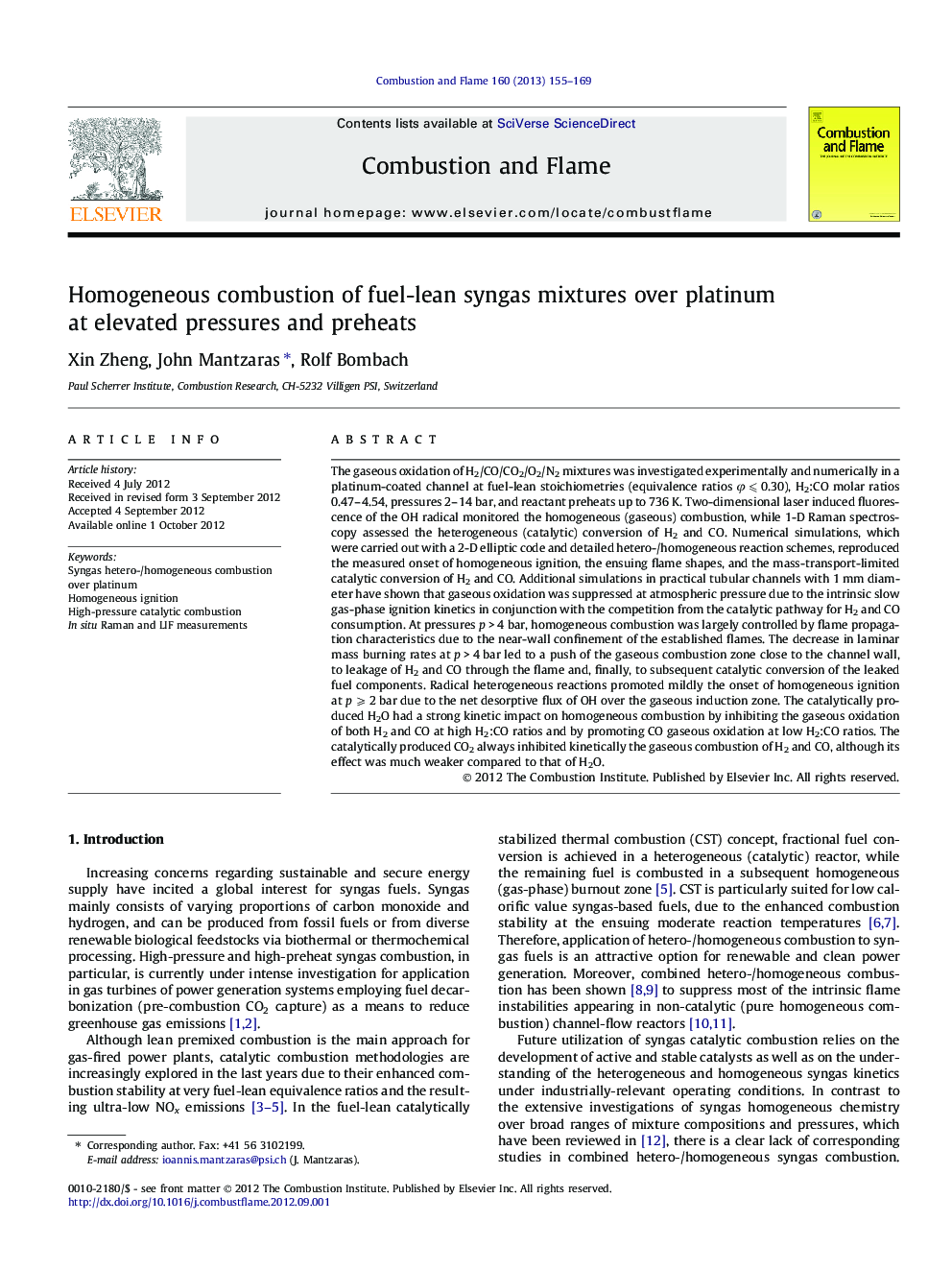| کد مقاله | کد نشریه | سال انتشار | مقاله انگلیسی | نسخه تمام متن |
|---|---|---|---|---|
| 167131 | 457839 | 2013 | 15 صفحه PDF | دانلود رایگان |

The gaseous oxidation of H2/CO/CO2/O2/N2 mixtures was investigated experimentally and numerically in a platinum-coated channel at fuel-lean stoichiometries (equivalence ratios φ ⩽ 0.30), H2:CO molar ratios 0.47–4.54, pressures 2–14 bar, and reactant preheats up to 736 K. Two-dimensional laser induced fluorescence of the OH radical monitored the homogeneous (gaseous) combustion, while 1-D Raman spectroscopy assessed the heterogeneous (catalytic) conversion of H2 and CO. Numerical simulations, which were carried out with a 2-D elliptic code and detailed hetero-/homogeneous reaction schemes, reproduced the measured onset of homogeneous ignition, the ensuing flame shapes, and the mass-transport-limited catalytic conversion of H2 and CO. Additional simulations in practical tubular channels with 1 mm diameter have shown that gaseous oxidation was suppressed at atmospheric pressure due to the intrinsic slow gas-phase ignition kinetics in conjunction with the competition from the catalytic pathway for H2 and CO consumption. At pressures p > 4 bar, homogeneous combustion was largely controlled by flame propagation characteristics due to the near-wall confinement of the established flames. The decrease in laminar mass burning rates at p > 4 bar led to a push of the gaseous combustion zone close to the channel wall, to leakage of H2 and CO through the flame and, finally, to subsequent catalytic conversion of the leaked fuel components. Radical heterogeneous reactions promoted mildly the onset of homogeneous ignition at p ⩾ 2 bar due to the net desorptive flux of OH over the gaseous induction zone. The catalytically produced H2O had a strong kinetic impact on homogeneous combustion by inhibiting the gaseous oxidation of both H2 and CO at high H2:CO ratios and by promoting CO gaseous oxidation at low H2:CO ratios. The catalytically produced CO2 always inhibited kinetically the gaseous combustion of H2 and CO, although its effect was much weaker compared to that of H2O.
Journal: Combustion and Flame - Volume 160, Issue 1, January 2013, Pages 155–169